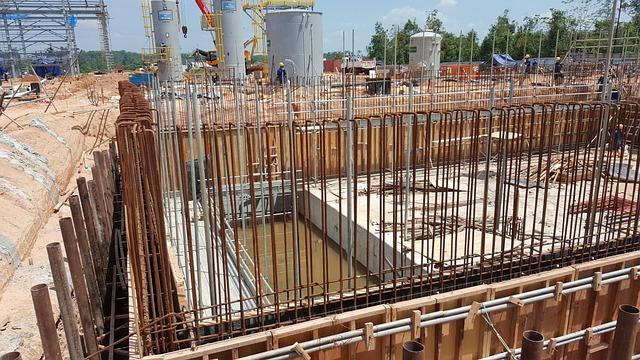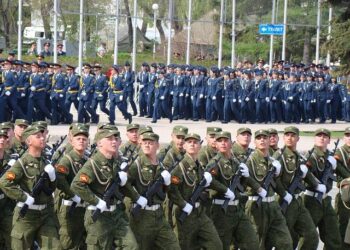How Yemen Changed everything: The Cradle of Modern Conflict
In an era marked by upheaval and relentless change, Yemen stands as both a focal point and a microcosm of the broader geopolitical shifts that have reshaped the Middle East. Once known as the land of ancient civilizations and rich traditions, Yemen has morphed into a battleground that encapsulates the complex dynamics of power, ideology, and survival. The Cradle, as it is often referred to, has experienced a turbulent journey from relative obscurity to the forefront of international discourse, highlighting the interplay between regional rivalries and global interests. This article delves into the factors that have propelled Yemen to the center stage of contemporary conflict,examining the ancient roots,the humanitarian crisis,and the implications for regional stability. As the world looks on, understanding Yemen’s profound transformation is vital for grasping the intricate tapestry of modern geopolitics and the challenges that lie ahead.
the Historical Context of yemen’s Transformation
The transformation of Yemen is steeped in a rich tapestry of historical events that have shaped its contemporary landscape. the region, frequently enough referred to as the birthplace of antiquity, has seen various cultures flourish and fall, including the Sabaeans and Himyarites. These ancient civilizations were known for their complex trade networks, particularly in incense and spices, which attracted the attention of empires across the arabian Peninsula and beyond. Over the centuries, Yemen has endured numerous invasions and influences, ranging from the Ottoman Empire to British colonialism, each leaving a distinct mark on its ethnocultural fabric and societal structures.
In recent decades, Yemen’s historical context has been substantially influenced by both external and internal dynamics. The Arab Spring in 2011 catalyzed a wave of political upheaval that aimed to eradicate decades of authoritarian rule, leading to the rise of popular movements and increased radicalization. The concurrent armed conflict has complicated the nation’s ability to stabilize, prompting a humanitarian crisis that has drawn international attention. Consequently, Yemen’s social transformations have been fueled by a combination of customary tribal structures and modern political aspirations, giving rise to a unique blend of resilience and vulnerability within its population.

Shifting Geopolitical Alliances in the Middle East
The ongoing conflict in Yemen has become a critical crossroads for geopolitical dynamics in the Middle East, reshaping alliances that have long been established. As various nations engage in this multi-faceted struggle, the implications extend beyond Yemen’s borders, affecting the broader strategic landscape. Key players including Iran, Saudi Arabia, and the United States are recalibrating their strategies based on Yemen’s evolving situation, leading to a realignment of relationships and power structures. The proxy war has encouraged countries to either bolster their commitments or reconsider their roles, highlighting a chilling reality: the traditional alliances may no longer hold the same weight.
With new partnerships emerging, the dynamics are complex and fluid. The recent clustering of nations around new ideological and tactical frameworks showcases critically important shifts:
- Iran’s influence: Solidifying ties with houthi rebels, enhancing its footprint in the Arabian Peninsula.
- Saudi Arabia’s pivot: Seeking normalized relations with former adversaries while engaging in peace talks to resolve the Yemeni crisis.
- U.S. withdrawal: Reevaluating its military presence in the region, exploring diplomatic pathways instead.
The intersection of local grievances and international interests in Yemen serves as a catalyst for reevaluating longstanding strategies and alliances. Understanding these shifts requires a keen analysis of the underlying currents that govern regional politics,where the balance of power is increasingly seen as a prototype for future interactions among Middle eastern nations.

Economic Strategies: Lessons from Yemen’s Resilience
The ongoing conflict in Yemen has forced its people to find innovative ways to ensure survival and economic sustainability despite a backdrop of devastation. This resilience has given rise to option economic strategies that can inspire other nations facing similar challenges. Key strategies observed include:
- Community Cooperation: Local communities have come together to create cooperative farming and trade networks, sharing resources and knowledge.
- Local Market Dynamics: In response to external market disruptions, yemenis have focused on strengthening local markets, reducing reliance on imports.
- Diverse Livelihoods: Manny families have diversified their sources of income, engaging in agriculture, crafts, and small-scale manufacturing.
- Bartering Systems: With currency devaluation, traditional bartering has re-emerged, enabling trade without the need for cash.
Additionally, the emergence of informal economy sectors has played a crucial role in mitigating the impact of war on daily life. Many vendors operate without formal regulations, providing essential goods and services. This underground network is supplemented by a resilient remittance system,wherein Yemenis abroad send money back home,sustaining family units and local businesses. A closer examination of these informal sectors reveals:
| Sector | Impact |
|---|---|
| agriculture | Food security and job creation |
| Crafts | Preservation of culture and local economies |
| Remittances | Financial support for families |

The Role of Civil Society and Grassroots Movements
In Yemen, civil society and grassroots movements have emerged as indispensable agents of change, shaping the socio-political landscape in profound ways. Active participation from various groups has highlighted the power of collective action, fostering a sense of unity among those who share a vision for a more democratic and just society. These movements often consist of diverse stakeholders, including women’s organizations, youth networks, and local NGOs, all working toward common goals such as human rights, anti-corruption, and essential service delivery.Their resilience in the face of adversity stands as a testament to the profound impact that organized civil efforts can have in conflict-affected areas.
The success of these grassroots initiatives can be attributed to their localized approaches and adaptive strategies.By engaging directly with communities, these movements have been able to effectively identify and address pressing issues. Key areas of focus include:
- Education: Advocacy for educational reform and access.
- Healthcare: Mobilizing resources for better health services.
- Economic Empowerment: Promoting small business initiatives and vocational training.
Moreover, the collaborative nature of these movements frequently enough leads to innovative solutions tailored to the unique challenges faced by Yemeni society. As these grassroots organizations gain momentum,their influence continues to reshape not only local governance but also inspire civic engagement across the region.

Recommendations for Future Diplomacy and Development Initiatives
As the Yemeni conflict reshapes regional dynamics, future diplomacy must embrace a multifaceted approach that prioritizes local engagement and long-term sustainability. Key recommendations include:
- Fostering inclusive dialog with all stakeholders, including marginalized groups to ensure lasting peace.
- Enhancing regional cooperation by involving neighboring countries in peace processes and development initiatives.
- Implementing strategies that address the underlying socio-economic grievances fueling conflict, focusing on humanitarian aid and infrastructure development.
- Utilizing technology and innovation in diplomacy efforts to improve communication and engagement with local populations.
Incorporating these strategies requires a collaborative framework that emphasizes respect for Yemen’s sovereignty and cultural context. Potential initiatives to support this approach could involve:
| Initiative | Description |
|---|---|
| Community-Based Mediation | engaging local leaders in mediation efforts to resolve disputes and build trust. |
| Economic Recovery Programs | Investment in job creation and skill-building programs for the youth. |
| Health Sector Reinforcement | Collaborating with international organizations to rebuild devastated health facilities. |
| Environmental Resilience Projects | Focusing on sustainability and adaptation to climate change to protect livelihoods. |

Key Takeaways
the conflict in Yemen stands as a stark reminder of the complexities and interconnectedness of modern geopolitics. It serves not only as a battleground for regional powers but also as a catalyst for broader shifts in alliances and strategies across the Middle East. The evolution of the situation in Yemen reflects the shifting paradigms of power, security, and humanitarian concerns that have left an indelible mark on the region’s landscape. As various actors continue to engage in this protracted struggle, the lessons derived from Yemen’s turmoil may reverberate far beyond its borders, influencing international relations and policy decisions for years to come. Understanding Yemen’s pivotal role in this unfolding narrative is crucial for comprehending the future dynamics of the Middle East. The Cradle,with its comprehensive coverage and insightful analysis,will continue to illuminate these important developments,keeping readers informed about the ongoing changes that are shaping our world.

















